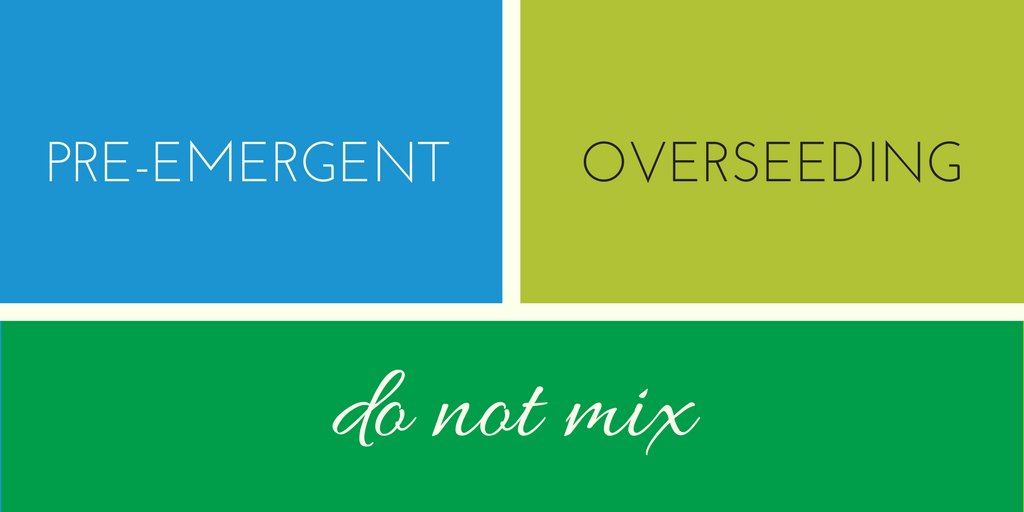One Common Lawn Care Mistake You Should Avoid This Spring!

Spring is an exciting time of year for all of us! We joyfully bid farewell to snow and ice, and we eagerly welcome budding plants and the sounds of chirping birds.
During this time, one of the first things homeowners notice about their property is the current state of their lawn. This awareness generally means focusing on two things: growing new grass and keeping weeds out. Sound familiar? If so, here are some things you need to know before you break out the grass seed.
What is overseeding?
Overseeding is the planting of new grass seed directly into existing turf. It’s an easy way to fill in bare spots, improve the density of your turf, and enhance your lawn’s color. Fall is generally the best time to overseed, but if you follow proper seeding, maintenance, and treatment practices, spring seeding can be effective also.
What is pre-emergent?
Pre-emergent treatments aim to eliminate weeds at their earliest stage of growth, which is before you can spot them in the yard. Lawn pre-emergent usually includes a combination of fertilizer and herbicide, and promotes healthy growth of existing turf while preventing the germination of weed seeds, such as crab grass and other pesky weeds.
Over-seeding and pre-emergent applications DO NOT MIX
While both of these methods are great ways to improve the quality of your lawn, the two do not mix. Because pre-emergent is applied to prevent germination of seeds, it will cancel out your overseeding efforts.
If you’re planning to seed this spring and have scheduled herbicide treatments with Topeka Landscape, please let us know in advance so that we do not apply pre-emergent. We don’t want to accidently thwart your efforts! If you are overseeding and treating for weeds on your own, you may consider doing your pre-emergent work this spring and holding off on overseeding until in the fall.
